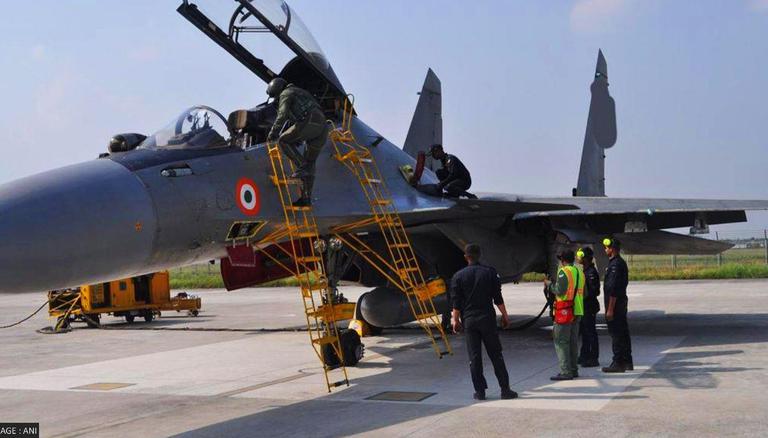cross-posted from: https://lemmy.run/post/19300
Author: Eashaan Dhillon
The IAF conducted Exercise ‘Ranvijay’ with a focus on integration and joint operations and used the Sukhoi Su-30MKI aircraft in the exercise.
The Indian Air Force, with a focus on integration, carried out Exercise ‘Ranvijay’. (Image: ANI)
The Indian Air Force carried out Exercise ‘Ranvijay’ with a focus on integration on Sunday (June 25). It was conducted from different air bases of the command headquarters of IAF in Prayagraj. The IAF conducted day and night operations with its various combat fleet including the Sukhoi Su-30MKI aircraft, a twin-engine multirole fighter aircraft developed by Russia’s Sukhoi and built under license by India’s Hindustan Aeronautics Limited (HAL).
The Sukhoi Su-30MKI aircraft is a heavy, all-weather long-range fighter. It is the most advanced fighter of the IAF after the French-made Rafale jets. The first fighter joined the fleet of the IAF in 2002, while the first aircraft assembled in India entered service with IAF in 2004.
About Indian Air Force’s Exercise 'Ranvijay’
The Central Air Command (CAC) in a statement said that the major focus of this exercise was on integrated operations while optimally exploiting the Electronic Warfare capabilities of the Indian Air Force (IAF). This exercise involved the execution of full spectrum operations by all combat assets. It will also improve the capabilities of the IAF to conduct night ops and function in all weather conditions across the globe.
"IAF UB Hills Prayagraj “Exercise Ranvijay was conducted in UB Hills and Central Air Command Area of Responsibility from June 16-23 wherein full spectrum operations by all combat assets by day and night were carried out,” Central Air Command of the IAF said. “The focus was on Integrated operations while optimally exploiting electronic warfare capabilities of the Indian Air Force,” CAC added. The exercise has proven that the IAF is capable of taking on challenges and protecting the nation’s skies from India’s adversaries with its technological capabilities. Moreover, the integration of the three tri-services will help thwart threats from India’s adversaries along the Western and Northern Border.




